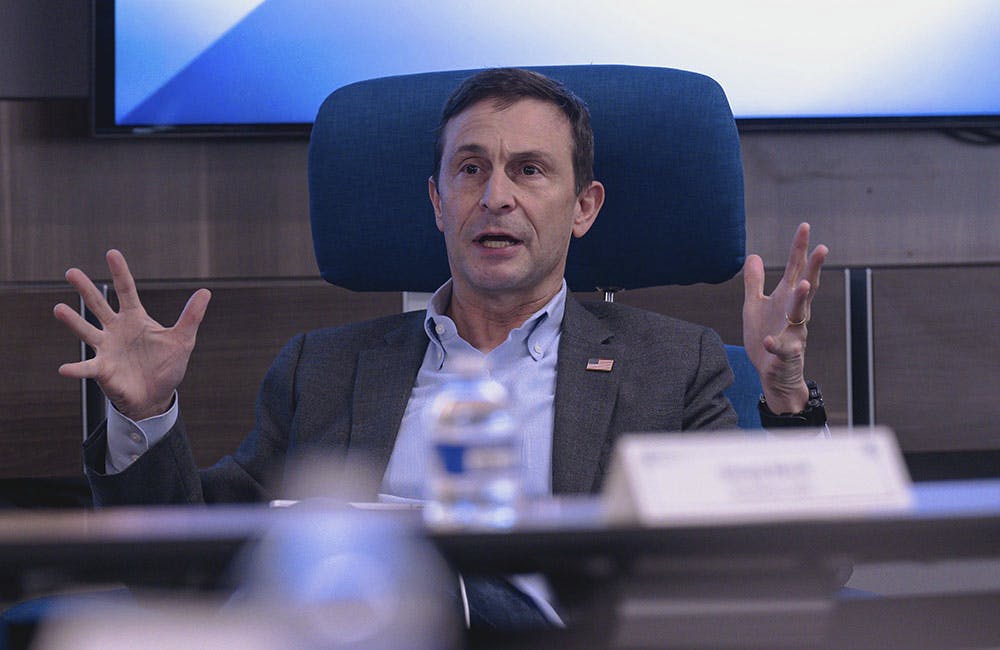GSA Hackathon Winners Produce AI Search Engine, Interface
Hackathon participants worked on how to use AI to improve customer experience and responsiveness on government websites.

The winning team out of General Services Administration’s Federal Artificial Intelligence Hackathon designed an original interface and AI-powered search engine for the National Science Foundation’s awards search website.
The hackathon challenged about 250 participants to develop ideas on how tech can improve government’s customer experience on the web, and winners shared a cash prize pool of $10,000.
“This event has demonstrated AI’s immense potential to transform government services and the opportunity to create websites and public-facing systems that deliver next-generation user experience,” the winning team members from software firm ASSYST told GovCIO Media and Research. “We have highlighted how AI-infused solutions can enhance transparency, efficiency and user engagement in the public sector by showcasing a practical application of [large language model] and Retrieval Augmented Generation in a grant data platform.”
GSA Administrator Robin Carnahan cited technology’s role in helping the country move forward while also exploring its potential. She said civilians and government officials need to mind three things when working with AI in particular: privacy, accessibility and trustworthiness.
“We live in a world where there’s a lot of confusion about what can be trusted and what can’t. Ultimately, it’s the government’s job to be in order. We have source data that’s important in people’s lives, and we need to maintain that,” said Carnahan.
How a Hackathon Tackled CX
The hackathon assigned teams and individuals to participating government sites. Participants were then tasked with using AI to make government websites and digital services more efficient, user-friendly and responsive to users’ needs.
ASSYST’s team found several issues that prevented users from a seamless online experience, such as unclear search results, readability, lack of filter options and poor site navigation.
The team wanted to create a modern website that aligned with agency standards and emphasized a better user experience. The redesign included an AI-powered chatbot and focused on human-centered design principles.
“We introduced an intuitive AI-powered chatbot interface equipped with SMART Search, which utilizes advanced AI Cognitive Search and RAG architecture. This SMART Search feature delivers instant, accurate and contextually relevant responses to user inquiries about award data,” ASSYST team members told GovCIO Media & Research.
This was GSA’s first hackathon it hosted since 2019. Its previous hackathon brought more than $700,000 of value back to the agency, according to agency officials.
“It was because we took code that was developed in that last hackathon, and that became an [minimum viable product] that we then scaled across the agency,” said GSA CIO David Shive. “All of the collateral that’s generated in this hackathon becomes government property. Sometimes the value is code — more often the highest value outcomes are ideation.”
This is a carousel with manually rotating slides. Use Next and Previous buttons to navigate or jump to a slide with the slide dots
-

CISA's CVE Program and Why it Matters for Zero Trust
The vulnerability program provides the cybersecurity community visibility into software as part of a key pillar of CISA's zero trust model.
5m read -

DOD's Tech Advantage Hinges on Commercial Collaboration, Says DIU Director
Seamless public-private sector integration is crucial for national security to compete with global powers, DIU Director Doug Beck said.
4m read -

Human-AI Collaboration is Key to Secure Government Systems
Former CIA security chief emphasizes training and international standards for effective AI implementation.
23m watch -

Air Force, Coast Guard Talk Data Security Efforts for AI Development
The services' AI initiatives include efforts like creating clean training data, countering data poisoning and bridging siloed teams.
4m read








